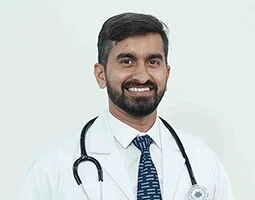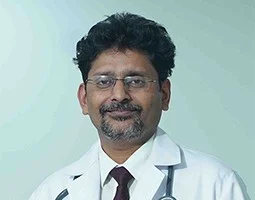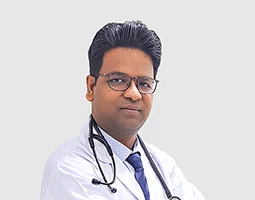Stroke Rehabilitation: How it Helps in Recovery and Improving Quality of Life
Stroke rehabilitation is a crucial aspect of care for individuals who have experienced a stroke. A stroke, also known as a cerebrovascular accident, occurs when there is a disruption in the blood supply to the brain, leading to brain cell damage. Stroke rehabilitation aims to help individuals regain lost abilities and improve their quality of life after a stroke. Here is an overview of key aspects of stroke rehabilitation:
- Multidisciplinary Team: Stroke rehabilitation is typically carried out by a multidisciplinary team of healthcare professionals. This team may include doctors, nurses, physical therapists, occupational therapists, speech therapists, and psychologists, among others.

- Assessment and Evaluation: The rehabilitation process begins with a comprehensive assessment of the individual’s physical, cognitive, and emotional abilities. This assessment helps in setting realistic goals for recovery.
- Goals of Rehabilitation: The goals of stroke rehabilitation may vary depending on the individual’s condition but often include;
- Restoring mobility and strength.
- Improving fine and gross motor skills.
- Enhancing speech and communication abilities.
- Addressing cognitive deficits.
- Managing emotional and psychological issues.
- Promoting independence in activities of daily living (ADLs).
- Preventing complications such as pressure sores or contractures.
- Physical Therapy: Physical therapists work on improving muscle strength, balance, coordination, and mobility. Exercises and activities are tailored to the individual’s specific needs.
- Occupational Therapy: Occupational therapists help individuals regain independence in daily tasks such as dressing, grooming, cooking, and using the bathroom. They may suggest adaptive tools and techniques.
- Speech and Language Therapy: Speech & language therapists assist individuals with speech difficulties (dysarthria or aphasia) and swallowing problems (dysphagia). Therapy may include exercises and strategies to improve communication and prevent aspiration.
- Cognitive Rehabilitation: Some individuals experience cognitive impairments after a stroke, such as memory loss or difficulty with problem-solving. They need cognitive rehabilitation for improving their quality of life & independence on ADLS.
- Psychological Support: Coping with the emotional and psychological effects of a stroke is important. Psychologists or counselors can provide support and therapy to help individuals and their families adjust to life after a stroke.
- Medication and Medical Management: Depending on the individual’s medical condition, medications may be prescribed to manage factors such as blood pressure, blood sugar, and cholesterol, which can impact stroke recovery.
- Prevention: Stroke rehabilitation also involves educating individuals and their families on stroke prevention strategies, such as managing risk factors like hypertension, diabetes, and maintaining a healthy lifestyle.
When to Begin with Stroke Rehabilitation
- Early Rehabilitation (Acute Phase Inpatient Rehabilitation): In most cases, stroke rehabilitation begins as soon as the acute medical phase is stabilized and the person is medically fit for therapy. This can start within the first 24 to 48 hours after stroke. Inpatient rehabilitation programs are often available in hospitals, specialized stroke centers, or rehabilitation facilities.
- Home-Based Therapy: Some individuals may start rehabilitation exercises and therapies whenthey are discharged to their at home. Early mobilization and physical therapy can help prevent complications like muscle stiffness and contractures.
- Subacute Rehabilitation: After the initial acute phase, which typically lasts a few days to a few weeks, individuals may continue rehabilitation in a subacute setting. This can be at a rehabilitation facility, skilled nursing facility, or at home with outpatient therapy services.
- Chronic Rehabilitation: Chronic rehabilitation aims to maintain and improve function, manage long-term complications, and enhance the person’s quality of life.
- Individualized Timing: The timing of rehabilitation should be individualized based on the person’s specific condition, medical stability, and the recommendations of the healthcare team. Some strokes are more severe and may require more time for stabilization before rehabilitation can begin.
- Medical Evaluation: It is very essential that a medical professional, typically a stroke neurologist or a rehabilitation specialist, assesses the individual’s condition and determine the appropriate time to start rehabilitation. This evaluation considers factors such as the type of stroke, its location, and the person’s overall health.
How long does the Stroke Rehabilitation last
The duration of stroke rehabilitation varies widely from person to person and depends on several factors, including the severity of the stroke, the individual’s overall health, their age, the type of therapy received, and their personal goals and progress. Stroke rehabilitation can be a long-term process that continues for months or even years.
The ultimate goal is to help individuals achieve their maximum potential for recovery and regain as much independence and quality of life as possible after a stroke.
Accord Superspeciality Hospital proudly stands as the best stroke rehabilitation center in India, offering world-class care and expertise in stroke patient recovery. With a team of highly skilled stroke specialists, we are committed to providing exceptional medical care and rehabilitation services tailored to each individual’s unique needs. Our dedication to cutting-edge treatments and compassionate support has made us a trusted destination for stroke patients seeking recovery. At Accord Hospital, we believe in empowering stroke survivors on their journey to regain independence and improve their quality of life. With a focus on holistic care and personalized treatment plans, we are at the forefront of stroke rehabilitation in India, helping patients overcome challenges and achieve remarkable recoveries.





